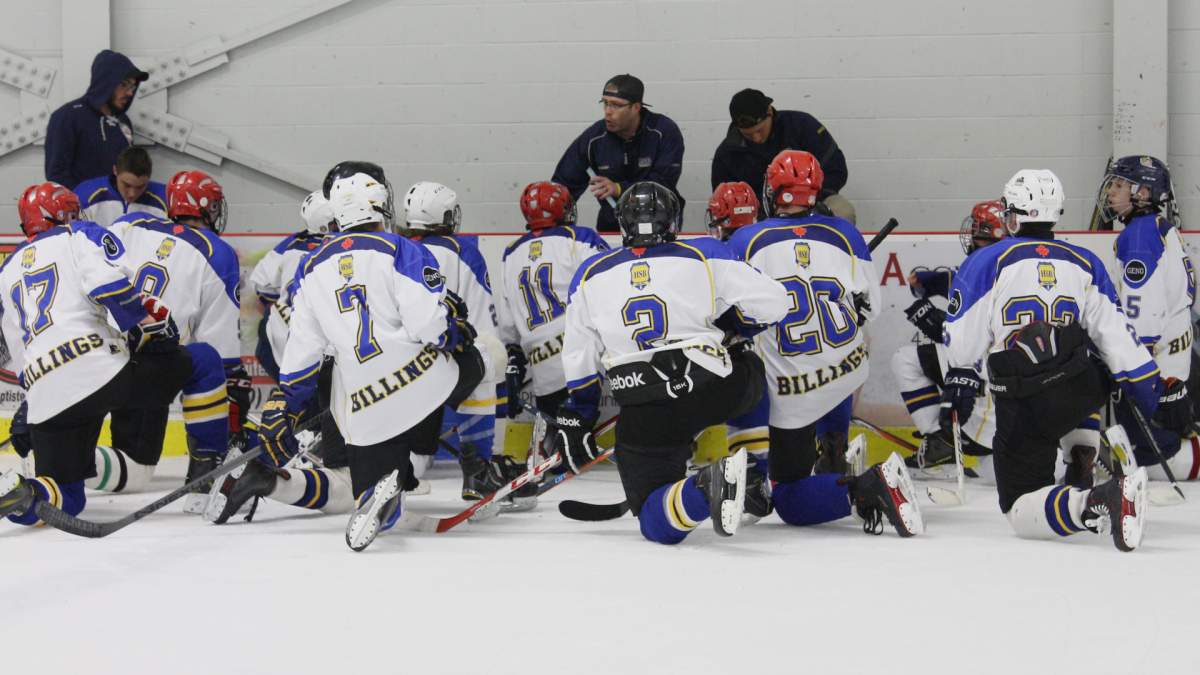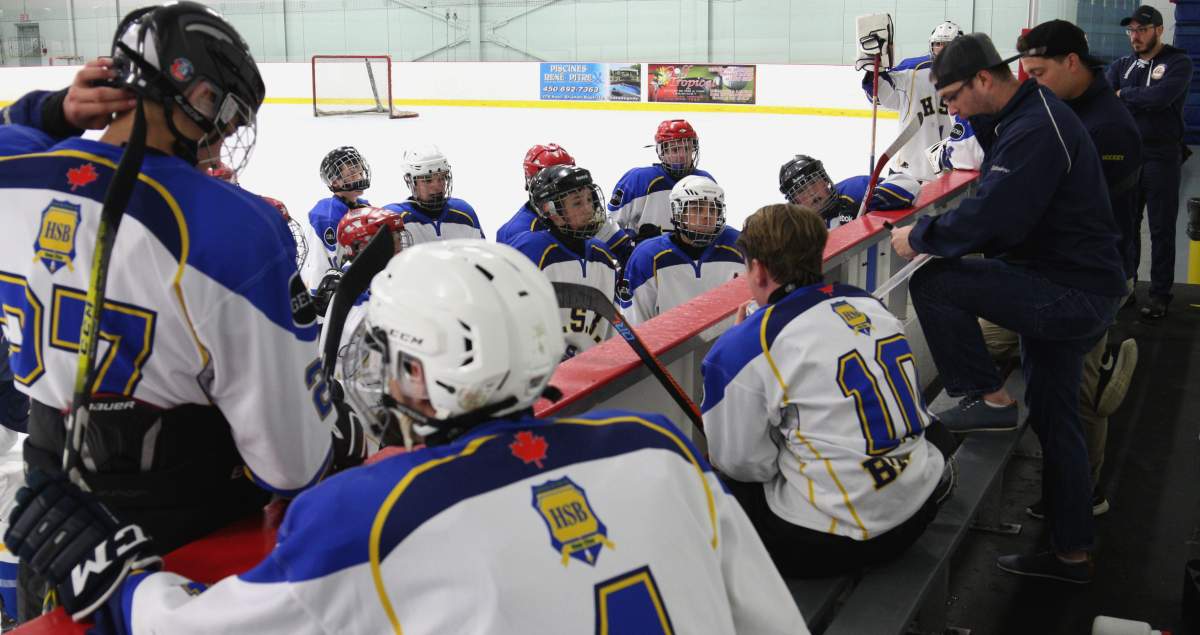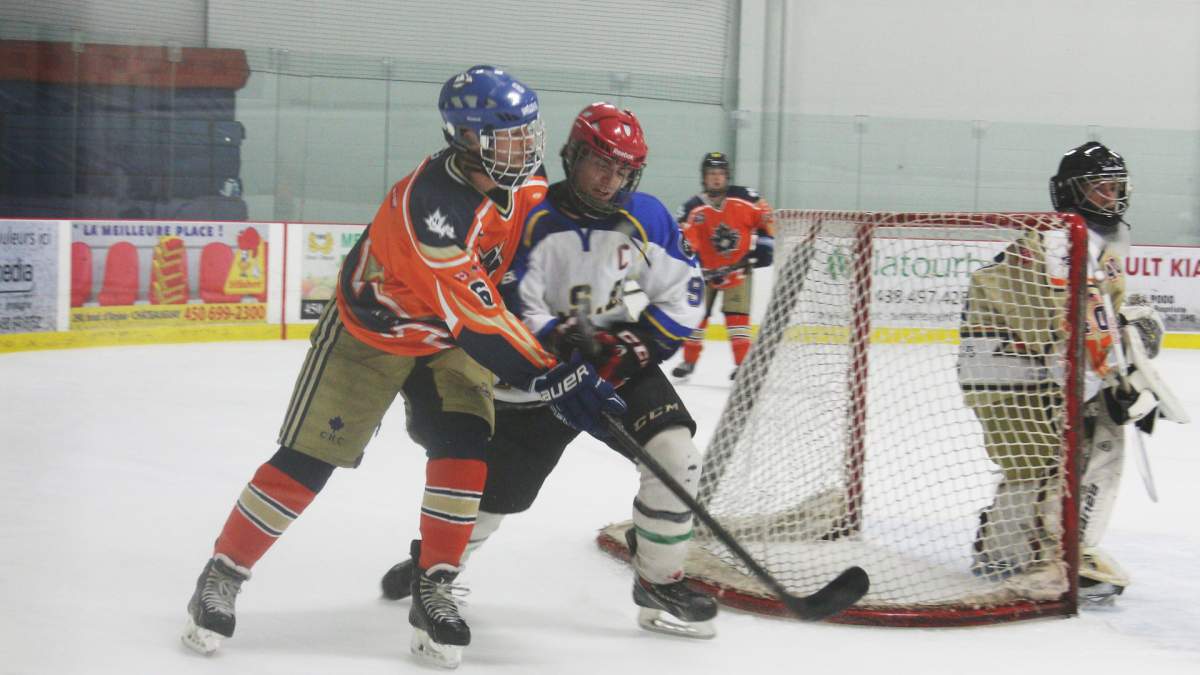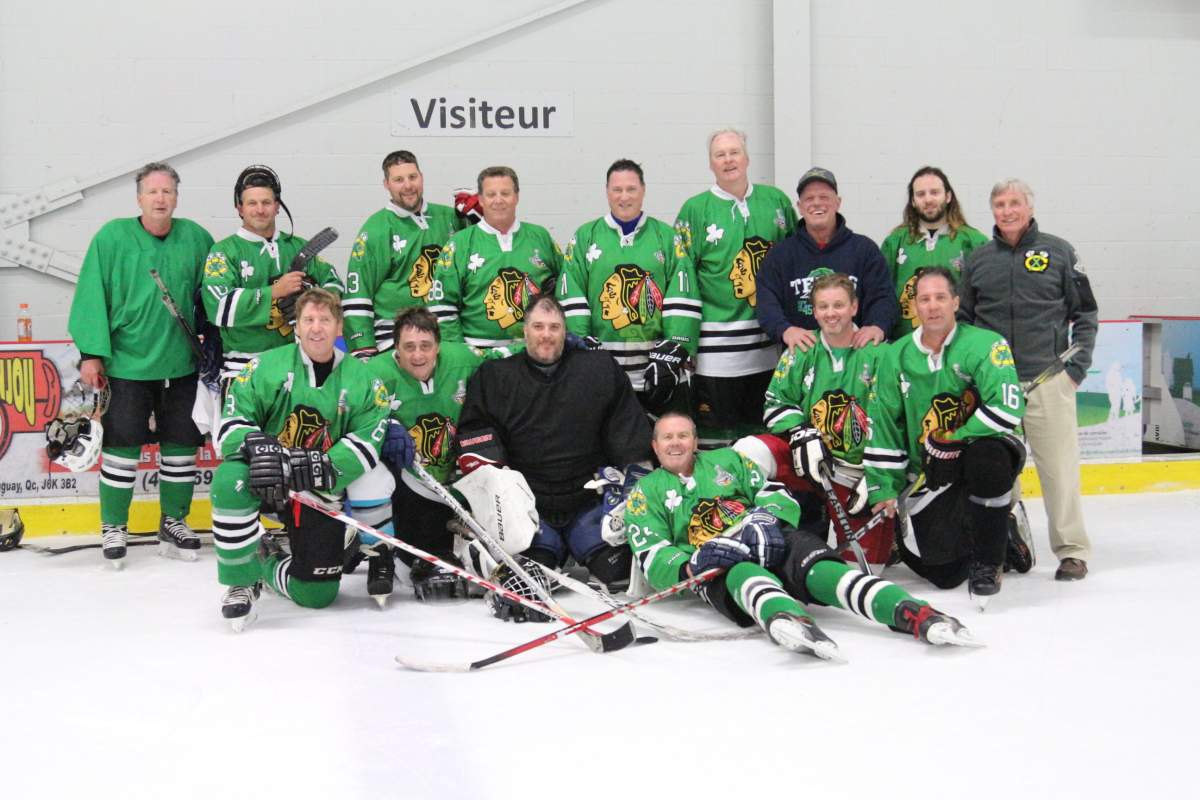Châteauguay’s Howard S. Billings (HSB) Blazers juvenile men’s hockey team is returning to the ice after a two-year hiatus.

The 2014-15 edition of the team was suspended for a year after players and team officials were involved in a brawl during the Greater Montreal Athletic Association (GMAA) finals.
After serving the ban through the 2015-16 season, the team sat out an extra year as Hockey Quebec shifted from allowing contact in non-federated leagues such as the GMAA.
READ MORE: Mintos edge Grenadiers in triple OT to win Telus Cup
It was a safety precaution to regulate full-contact hockey under a single governing body; a move that was understood by the high school athletics organization.
“Some schools could access ice four times a week to practice and play full-contact games,” said GMAA executive director Amanda Maks about the shift in the minor hockey paradigm.
“While other schools would only have enough ice to play one or maybe two full-contact games per week.”
Because GMAA could no longer offer contact, there wasn’t enough interest to host a juvenile men’s hockey league in 2016-17.
However, HSB iced a midget non-contact hockey team to play in the GMAA circuit last year.
The team has since moved into the juvenile men’s age group and this year they will be debuting in the full-contact Quebec Interscholastic Hockey League (QIHL).
HSB hockey alumnus and Concordia Stingers men’s hockey assistant coach Scott Colosimo has taken over as director of the hockey program for the high school.
Colosimo is building the program to rival that of Quebec’s Sports-études high performance athletics and education program.
“We have players who are high calibre that decided not to play city hockey but commit to the program full-time,” Colosimo said.
“We are offering two to three practices per week, off-ice sessions with a certified trainer, 22 regular season games, along with play-offs, tournaments and exhibition games.”
Grinding through inflation, subsidy cuts and a home-rink closure
The new league comes with an increase in fees; the Blazers are now paying $4,500 to play in QIHL, compared to GMAA league fees of $1,500.
“GMAA doesn’t have high league fees because it’s only the insurance that the players are paying for,” Maks said.
Transportation is now $9,000 for the season; a charge that was non-existent when HSB physical education teacher Bryan Pitts took over the juvenile men’s hockey program in the early 1990s.
During those days, when only travel to away games was needed, a team bus was subsidized with government funding.
The team was also able to supply matching gear for its players with revenue generated from its own annual hockey tournament and citrus drive fundraisers.

Get daily National news
As years went on, Quebec’s public education subsidies began to decline and were eventually cut for the HSB hockey program.
READ MORE: Where’s the money? Quebec schools waiting for promised money
The new gear gradually lost its punch and grew tired when the team’s funds were directed at bus rentals.
But that wasn’t the last of the budget hikes.
The team’s original home ice used to be across the street from the school at Guy Scott Arena.
“The program was good when I played,” said two-time Stanley Cup champion Corey Crawford, the most decorated of past HSB Blazers.
“It was cool to go straight from school to the rink.”
The City of Châteauguay closed Guy Scott Arena to transform it into an open-air public venue in 2012, which caused a significant increase to the program’s travel fees.
READ MORE: Châteauguay player brings home the Stanley Cup
Transportation is now needed to access home ice across town at the new Centre Multisports de Châteauguay or the Kahnawake Ice Complex, which the team spends an extra $2,400 to rent extra ice to fill out its training schedule.
“From about 2003 to 2009, fees were between $75 and $150 [per player].”
With the team’s cost now hovering around $16,000, players will be paying up to $850, a 500 per cent increase within the past decade to competitively play Canada’s favourite sport.
Colosimo keeps an open mind about the inflated cost, saying he can give students a valuable lesson in working hard to lower inscription fees through fundraisers.
“I don’t just want the parents to sign a cheque to have the kids play, I want the kids to earn it,” said Colosimo about his blue-collar approach both on and off the ice.
“Not everything is given to you in life; if you want something you have to go out and earn it – that is Billings in my mind.”
The current fundraiser has the Blazers hard at work, selling raffle tickets for an autographed Crawford jersey.
Old mitts give back
Another big part of the HSB hockey program is its alumni community.
Since 1977, former players and graduates of the high school organized and hosted annual alumni hockey tournaments in order to raise funds for the program.
As the school produced NHL-calibre talent in Gordie Laxton, Ron Carter, Glenn Currie, Bobby Dollas, Alexandre Bolduc and Crawford, the HSB alumni also tries to get its stars involved with the program whenever schedules allow.
Much like the hockey program, its alumni committee has to adapt to occasional changes.
The HSB Hockey Alumni group built itself throughout the years: in 1979, the late former coach and HSB teacher Gene Rossiter designated Ron Burton as president of the HSB Hockey Alumni Committee.
In the early 2000s, Burton stepped down from the role.
READ MORE: NHL alumni, local celebrities come together to play hockey for a good cause
After a few years of different presidents, such as Blair Bertolini, Samantha Poirier, Scott Berwick and Frank Maoire, Leigh Sawyer eventually took on the role in 2015 and has been running the HSB Hockey Alumni since.
The modern edition of its alumni tournament is held at the Centre Multisports de Châteauguay and draws graduates from the 1970s up to last year.
While the younger guys can play intense tournaments over a two-day span, organizers allow for a non-competitive division; ice-time where life-long teammates can play for fun.
“Its purpose is to raise funds for the current Billings hockey program,” Sawyer said.
“[We want] to assure that the students of today are able to experience the same opportunities the alumni members had while playing for HSB.”
Sawyer and his team raise in the range of $3,000 to $5,000 per year for the HSB hockey program.
But he feels the tournament has dwindled since the closure of the old Guy Scott arena, which was its own special era of alumni tournaments.
“The atmosphere around the tournament has clearly changed. That change seemed to coincide with the closure of our sacred barn, Guy Scott Arena,” Sawyer admitted.
Former editions of the tourney allowed for licensed beer sales to generate income, compared to beer sale revenue going to the privately owned bar at the Centre Multisports de Châteauguay.
The Guy Scott tournaments also featured one game at a time, in comparison to simultaneous games across two different rinks at the new facility.
And although it makes for a different vibe, the HSB hockey program is content with how its alumni continue to help out.
“I’m really happy with the support that the alumni members have been showing,” Colosimo said.
“It makes all the work I have put into this program worth it.”
As the team’s roster turns over annually, along with other surprise changes, the biggest importance in stability is having leaders like Colosimo and Sawyer to carry the school’s hockey tradition.






Comments